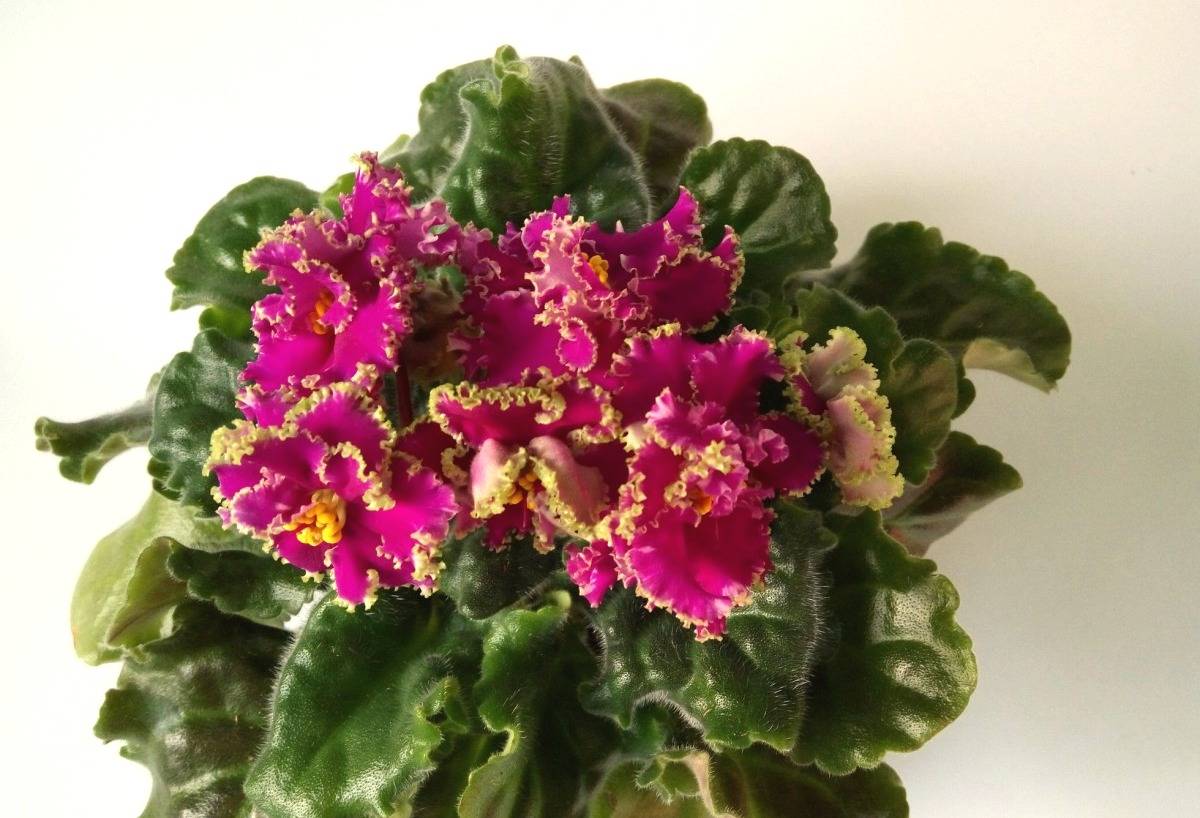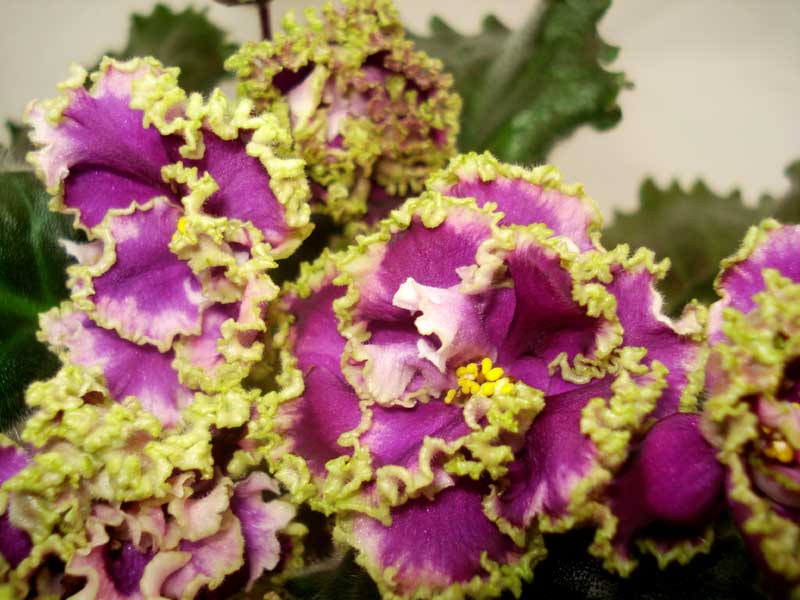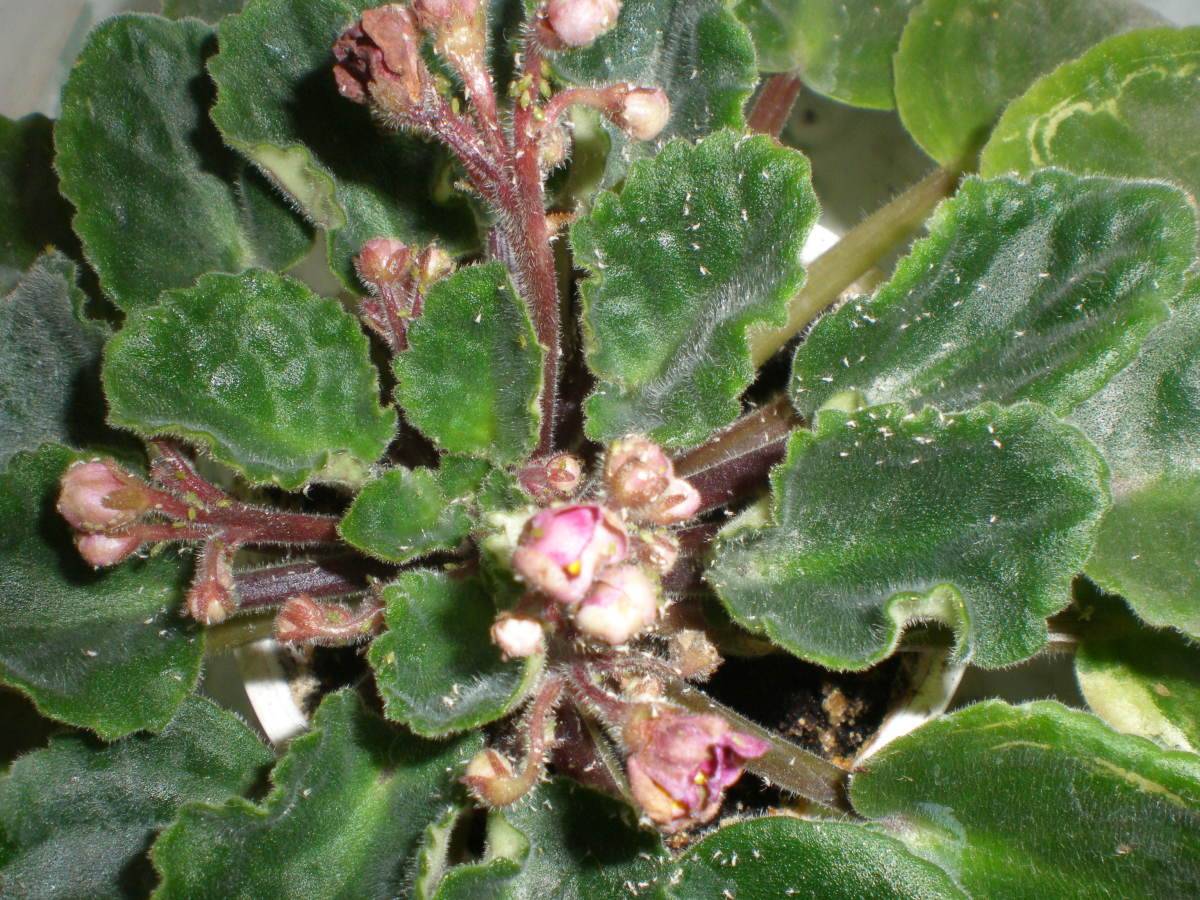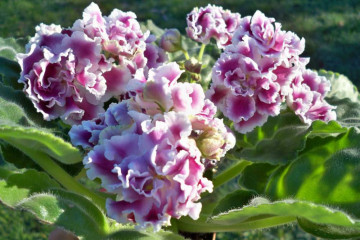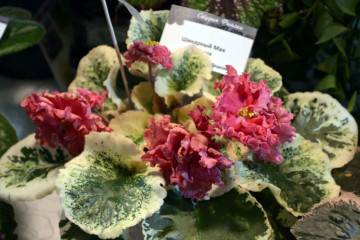Violet Esmeralda - description and characteristics of the variety
Content:
Violet Esmeralda attracts the eyes of everyone around her. She has beautiful crimson flowers growing from the center of the rosette. A light green border runs along the edges of the wavy petals. Further information on growing crops at home.
What does the violet Esmeralda look like?
Saintpaulia blooms beautifully and for a long time. During this period, the entire bush is covered with crimson inflorescences. The violet rosette consists of large velvety green leaves. With age, the edges of the leaf plates may acquire a slight waviness. Beautiful inflorescences grow from the middle of the outlet.
Double or semi-double flowers are painted with a crimson palette. A light green stripe runs along the edges. Over time, it brightens, but does not become completely white.
Briefly about the history of appearance
Esmeralda is one of the many varieties of the Usambara violet. It was bred by the breeder Elena Seletskaya. The variety got its name in honor of the gypsy woman of the same name from the novel "Notre Dame Cathedral" by V. Hugo. The Esmeralda flower, like the girl, is beautiful and capricious.
The difference between the varieties Esmeralda and Esmerald Lux
Both varieties of violets are bred by the same breeder. The difference between Esmerald Lux is in larger and terry inflorescences. The color of its petals is bright, crimson-burgundy.
Sometimes the flower grows with characteristics that are not inherent in the variety. In such cases, they say that it turned out to be a sport. Esmeralda can form curly leaves, the petals turn pale pink. This is her sport.
Care features
Violet Le Esmeralda is capricious, but with the right content, it blooms beautifully and for a long time. The most favorable temperature for her is + 18-22 degrees. Do not take the plant out into the air in the summer. It is important not to allow a difference between day and night temperatures.
Place pots with violets on the west or east window. The leaves should not be exposed to direct sunlight, as this can cause burns on them. In hot weather, plants are moved away from glass. Daylight hours should be long and be at least 15 hours a day. In winter, the culture is supplemented with phytolamps.
Water the violet as the top layer of the soil dries. The water is used warm, settled. A few minutes after watering, excess liquid is removed from the pan.
Spraying Saintpaulias is not done. Water droplets on the leaves contribute to the appearance of yellow spots. As a result, the decorativeness of the culture is significantly reduced.
Le Esmeralda does not tolerate dry air. To increase the moisture content around the violets, sprinkle with water from a spray bottle. In addition, the plants can be placed in a tray filled with wet expanded clay.
Priming
The substrate for violets is selected lightweight, breathable and permeable. In the flower shop you can buy ready-made soil for Gesneria crops. You can prepare it yourself from the following components:
- leafy land;
- peat;
- river sand;
- perlite.
Pieces of charcoal can be added to the disinfection substrate.
Top dressing
When planting Saintpaulia in fertile land, the first feeding is done after six months. At first, nitrogen is introduced, which promotes the growth of green mass. During the period of bud formation, potassium-phosphorus fertilizers are applied. They promote lush flowering.
How Saintpaulia Les Esmeralda reproduces
The hybrid violet is propagated by cuttings (leaves). They are chosen from the 2nd row. The procedure is carried out as follows:
- Strong cuttings are cut with a sharp knife.
- Placed in a glass with a little water.
- When the roots appear, the cuttings are planted in a pot with prepared soil.
Leaves can be planted in a container immediately after cutting. They are slightly dried, then placed ⅓ in the ground. The container with cuttings is covered with foil to create greenhouse conditions.
Covering material is removed every day, wipe it and the container with a dry cloth. If this condition is not met, plants can be affected by fungal diseases. Soon, children will grow from the base of the leaves. They are grown, then transplanted into separate small pots.
Planting after purchase and during reproduction
Violet is transplanted 2 weeks after purchase. During this period, she adapts to new conditions of detention. In addition, the grower will be able to identify if there are any pests and pathogenic microorganisms on the plant.
The transplant is performed as follows:
- A pot is selected 1.5-2 cm larger than the previous one.
- Loose, fertile soil is covered.
- Remove the violet from the old container along with a lump of earth.
- The plant is planted in a new pot.
- Cover the free space between the roots and the walls of the pot with earth.
The violet is watered with warm water. Pour excess liquid from the pan.
Possible growing problems
Due to improper care, the decorative effect of the flower may decrease. Falling water droplets on the leaf plates provokes the appearance of yellow spots. Due to the lack of light, the cuttings stretch out. The heat may cause the leaves to dry out.
Pests and diseases
If the violet is kept in a room with too dry air, it can be attacked by a spider mite. In addition, Saintpaulia is affected by thrips and aphids. Insects are eliminated with insecticides.
Common diseases of the Esmeralda violet:
- powdery mildew;
- rust;
- root rot.
For the prevention and treatment of Saintpaulia, fungicides are used.
Signs of improper care
Esmeralda is a capricious violet, so it is better for beginners to practice on more unpretentious varieties. Signs of improper care of Saintpaulia are as follows:
- due to a lack of light, the petioles are stretched;
- soil salinity leads to leaf curling;
- watering with cold water, spraying, direct sunlight contributes to the appearance of various spots on the leaves.
Esmeralda is a violet variety with beautiful crimson inflorescences. She is a little capricious, so she needs careful maintenance. But, by correctly performing agrotechnical measures, the florist will be able to grow a spectacular home plant on his windowsill.
